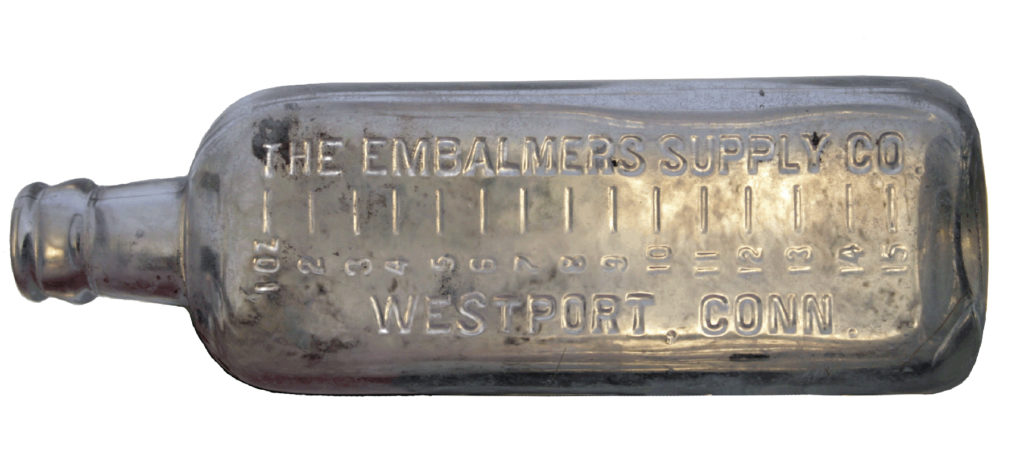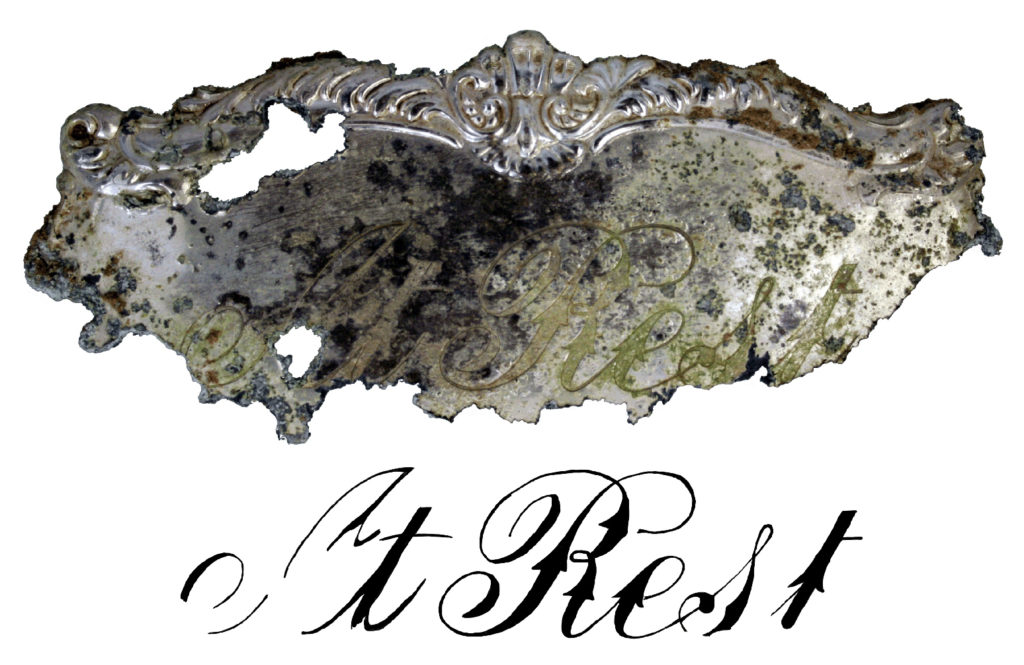
Tucson’s Abandoned Court Street Cemetery
This week’s blog is written by Homer Thiel, Desert Archaeology’s historical archaeology expert.
Hidden beneath the streets, sidewalks, homes, and businesses of an eight-block area located across the street from downtown campus of the Pima Community College in Tucson is the historic Court Street Cemetery. It opened in 1875, after Tucson’s Common Council decided the existing downtown cemetery, now the location of the Pima County Joint Courts Complex, was a nuisance and the land too valuable. Statistical Research, Inc., excavated this cemetery between 2006 and 2008, finding the remains of 1,386 individuals in 1,083 graves and disturbed areas.
The east half of the new cemetery became the Catholic Cemetery plot, while west half included the City and County Cemeteries. Further to the west were individual plots for the Grand Army of the Republic (Union Civil War veterans), the Tucson Volunteer Fire Department, the Independent Order of B’nai B’rith (Jewish), the Independent Order of Odd Fellows (temperance society), Ancient Free and Accepted Masons (Masonic), the Knights of Pythias (fraternal group), the Ancient Order of the United Workmen (fraternal labor group), and the Improved Order of Red Men (fraternal group).
Perhaps 7,000 to 9,000 burials were interred in the cemetery during its 34 years of operation, the exact number unknown because record keeping was poor. It closed in 1909, after businessmen decided the land was better suited for other purposes. The same men laid out the new Evergreen Cemetery, while the Catholic Church opened the Holy Hope Cemetery, both on North Oracle Road in Tucson.
Newspaper advertisements in 1915 asked for people to disinter their family members and friends, with funeral homes offering to do so if paid. Many heeded the call, but others could not afford the cost to hire undertakers to remove bodies and purchase new plots. Many people buried in the cemetery had no friends or relatives in the community, while the locations of those without tombstones had been forgotten. Somewhere between 40 to 50 percent of the bodies were left in place and their graves subsequently built over.
Since the 1960s, over 50 burials have been located during utility repairs and home improvement projects. In 2007, Desert Archaeology was called after a homeowner discovered a sinkhole in his sidewalk and his shovel probe hit a coffin. The excavation team discovered an upper coffin, containing a child, resting on top of a second coffin containing an adult male. Many pieces of clothing had been stuffed into the child’s coffin, and the man had been buried with the contents of his pockets intact: coins, a small change purse, a comb, and a pocketknife. Both situations are atypical. The likely explanation is that these two individuals died from a communicable disease, like smallpox, and were quickly buried.

Feature 14, excavated by Desert Archaeology, contained a 30- to 40-year-old male who was buried with his pocket contents intact (drafted by Susan Hall).
In 2012, Desert Archaeology was asked by the City of Tucson to examine the property at the southwestern corner of Stone Avenue and Speedway Boulevard, the former location of a bank. DAI developed a strategy to efficiently locate any burials on the parcel. We knew that the average length of adult graves was 6-feet-long and most have their long axis east-to-west. DAI dug 7-ft-wide strip trenches running north to south, with 5-ft-wide adjacent backdirt piles, across the parcel. This allowed for the detection of two graves. Both had been partially disinterred, one with embalming fluid bottles tossed in. That grave also had a fired bullet in the area where the head had been. DAI has been compiling a database of individuals buried in the cemetery, and of the thousands of entries, 27 were males who died from gunshot wounds, five of whom were possible matches for the male in the grave.

Bottle embossed THE EMBALMER’S SUPPLY CO. WESTPORT, CONN., found in burial Feature 37 by Desert Archaeology crew (photograph by Robert Ciaccio).
Also in 2012, Pima County re-lined aging sewer pipe within the cemetery. Desert Archaeology monitored the work, leading to the discovery of seven graves in the Catholic portion of the cemetery. Many of the coffins had hardware and decorations with religious themes. One woman held a Job’s tears rosary in her hands, while another person had a framed picture, probably of a Catholic saint. This contrasts with burials from other portions of the cemetery, which have coffins with secular decorations, such as plaques inscribed “At Rest.” Desert consulted with Jeremy Pye, who used his collection of coffin hardware catalogues to find matches for many of the items recovered from the cemetery.

Cross-shaped coffin handle found in a grave in the Catholic portion of the Court Street Cemetery (photograph by Robert Ciaccio).

Identical “At Rest” plaque from the Chattanooga Coffin Company 1905 catalogue (image courtesy Jeremy Pye).
In 2015, Desert Archaeology excavated 10 graves in the Pima Tribe No. 10, Improved Order of Red Men plot. Starting in 1898, this fraternal group had monthly parties where men drank alcohol, smoked cigars, gave speeches, and sang songs. Men marched in parades dressed in stereotypical Native American attire. Members paid monthly dues and if they died, the group paid for their funeral, including embalming, clothing, digging the burial pit, and the coffin. Desert Archaeology had previously dug strip trenches for the Salvation Army, who owned the Red Men plot, locating 20 grave shafts. The ten located on the east side were on land traded to the City of Tucson and had to be removed.
One grave was empty, the original grave diggers abandoning the pit after hitting an earlier burial. Seven burials had been disinterred, with coffins left behind in six graves and human remains in seven. One well-preserved coffin has griffins made from gutta percha, a molded mixture of sawdust and glue, on each corner. The graves of two children were complete. Rose wreaths lay on the lids of both coffins, one of which was very well preserved.

This well-preserved coffin has molded gutta percha griffins on each corner, wooden molding, and swing bail handles (photograph by Robert Ciaccio).

Plant remains and ribbon on the lid of this walnut wood coffin came from a rose wreath. The coffin handles had the saying “Our Darling” on them (photograph by Robert Ciaccio).
It is likely that thousands more people still lie at rest in the cemetery; another burial was discovered as recently as October 2016. The Superior Court of Arizona in and for Pima County has issued protocols outlining how future burials are to be treated within the cemetery. Desert Archaeology continues to collect data on the people buried in the Court Street Cemetery, with eventual plans to publish the database.



